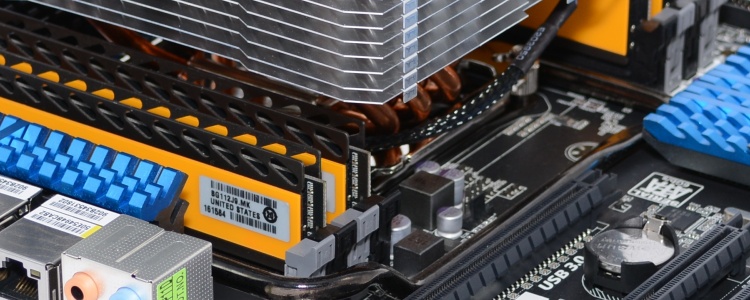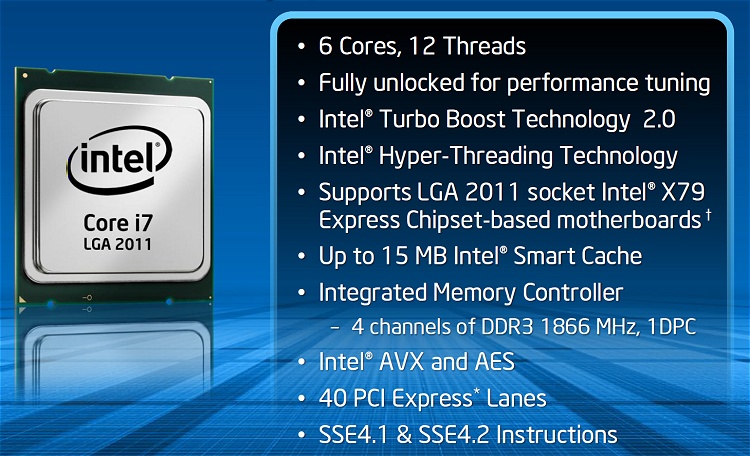Haswell has been out in the wild for 3 months now, while Sandy Bridge-E has remained Intel's "ultimate" desktop platform for almost 2 years. However as we had anticipated, Intel is now ready for a refresh of its Extreme platform, but they won't be skipping the Ivy Bridge architecture and moving straight to Haswell. Rather, the LGA2011 platform is getting an upgrade with new Ivy Bridge-E processors.
Enter the Core i7-4960X which still features 6 cores, 12 threads, 15MB L3 cache, quad-channel DDR3 memory and is supported by the same aging X79 chipset. This doesn't sound very exciting, so what's new?
Well, other than a slight bump in frequency, which is kind of pointless on an unlocked Extreme Edition processor, and the ability to natively support DDR3-1866 memory, not a lot. You do get the slight efficiency improvements of the Ivy Bridge architecture, and honestly Haswell didn't do much for the desktop anyway, so that's not something we'd criticize first thing.
But before spoiling everything that's relevant about the new Core i7-4960X and get on benchmarking Ivy Bridge-E against other Intel high-end offerings, let us rewind a bit on the history of the LGA2011 platform.
Intel first introduced LGA2011 back in November of 2011 with two processors and one chipset – the Core i7-3960X and i7-3930K running on the X79 chipset. Based on the Sandy Bridge architecture, which had been released 11 months prior, "Sandy Bridge-E" (32 nm) was born.
Boasting up to 6 cores, 12 threads, 15MB of L3 cache and a quad-channel memory controller, the new Sandy Bridge-E processors were monsters.
The flagship and Extreme Edition model, known as the Core i7-3960X, cost a cool $1000 and although it was slower than the $320 Core i7-2600K when comparing memory bandwidth and gaming performance, it was worlds faster in our synthetic, application and encoding benchmarks.
Just 5 months after the release of Sandy Bridge-E we saw the arrival of Ivy Bridge Core i7 processors. Ivy Bridge adopted the same LGA1155 socket used by the standard Sandy Bridge processor. At the helm was the Core i7-3770K.
When compared to the previous i7-2600K flagship, the i7-3770K was ~10% faster while consuming ~10% less power. A noteworthy improvement, but nothing to get overly excited about, and certainly not enough to warrant upgrading if you already had a Sandy Bridge processor even though Ivy was a drop-in replacement.
Then this past June the latest Haswell architecture was released and along with it the Core i7-4770K desktop part. Interestingly (or should we say, unfortunately) Haswell introduced a new socket (LGA1150) which removed five pins and is not compatible with LGA1155 processors. Our testing showed an average performance gain over Ivy Bridge at a little under 10%, while Haswell actually consumed more power.
So, back to our initial question: what's new with Ivy Bridge-E?


